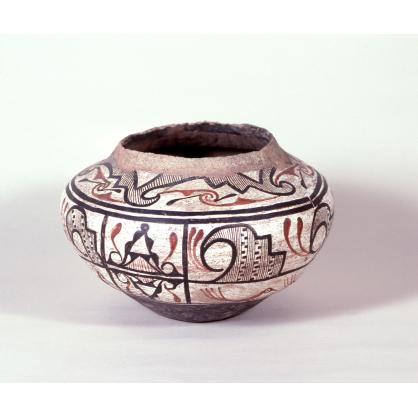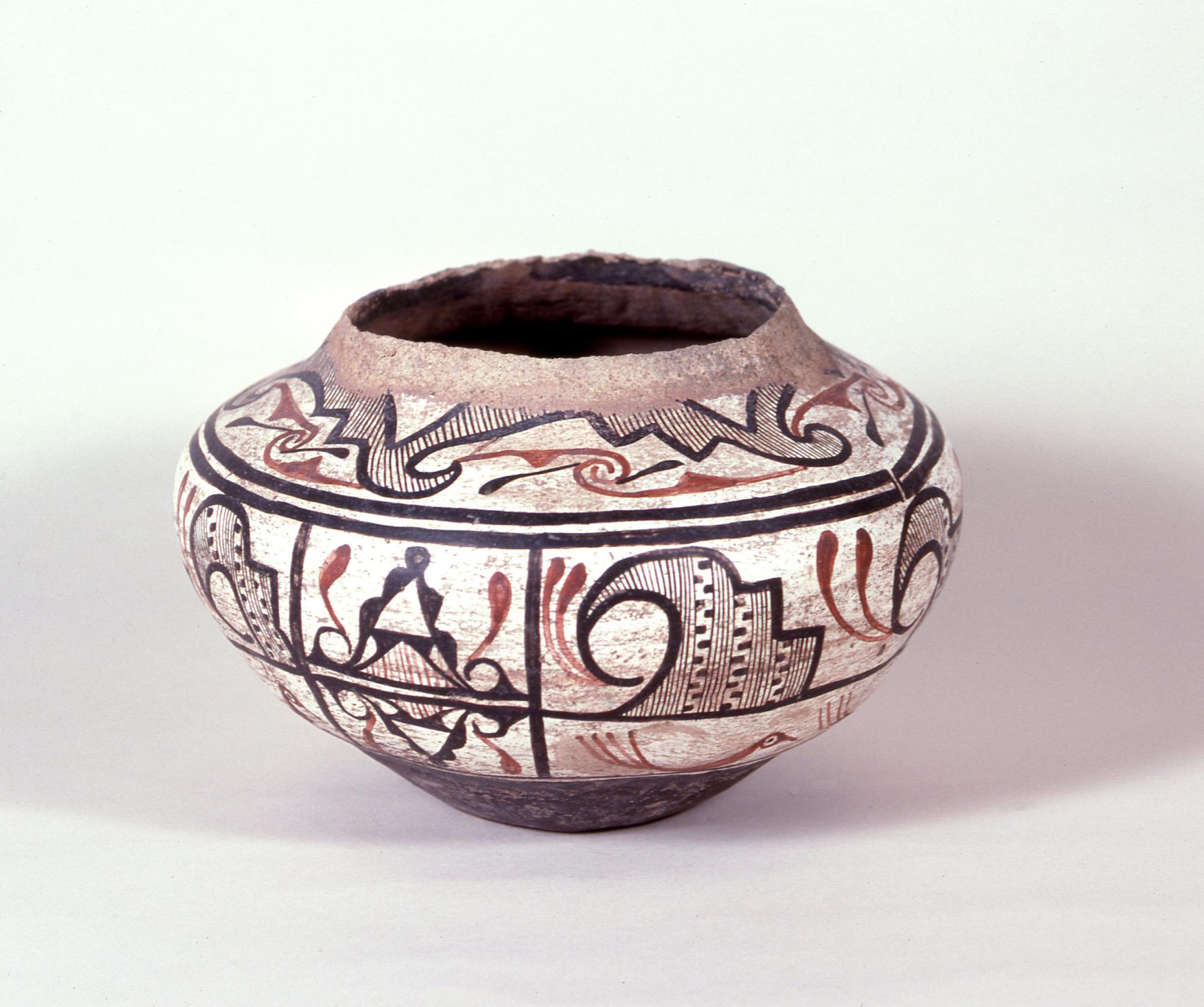
Photograph by Addison Doty. Copyright 2010 School for Advanced Research.
Water jar | K'yabokya de'ele
Date: 1880 - 1890
Artist or Maker: Unknown
Dimensions:
Dimensions: 22.9 × 31.8 cm (9 × 12 1/2 in.)
Weight: 2.4 kg (5.2 lb.)
Medium: clay | paints
Credit Line: Indian Arts Fund purchase for the permanent collection.
Place Made:
Zuni Pueblo, McKinley County, New Mexico, Southwest, United States, North America
Object Number: IAF.611
Not on view
Tribal Collection Review RemarksJim Enote and Octavius Seowtewa during collection review visit February 17 and 18, 2010 (Events Record “Collection Review: Zuni Tribe, Review 4”): The neck of the jar is much eroded around the rim (natural wear). Below the eroded areas, the rest of the neck is decorated with bird and rain elements. There is a black double line separating the neck design band from the body designs and it has a line break. The body design is divided by a single black line into two horizontal design bands. The upper band contains rain birds painted in black, with red crest feathers. The rain line hatching inside the rainbirds consists of lines and also black dots or ticking. The lower band contains red birds with long tail feathers (some also have orange beaks). The two horizontal bands are interrupted by two vertical design bands, located on opposite sides of the jar. The vertical bands contain vertically-mirror images of a house structure with red rain line hatching inside them. Red feathers are positioned one on either side of each house. The wear on the base of jar appears to be natural.
The word for a water jar in Zuni is “k'yabokya de'ele,” which translates to “water container vessel” in English. The intended use for these jars was to store and carry water, but they could also be used to store other items.
In Collection(s)
Bibliography:
Pueblo Designs
- Pg. 37
- Fig. Plate X, 3
The Indian Arts Research Center, in collaboration with Native American community scholars, strives to present accurate collections records. Records may be updated as new information becomes available and is reviewed with the Native American community having cultural affinity to particular items. Please write to iarc@sarsf.org if you have questions or concerns related to the documentation.


